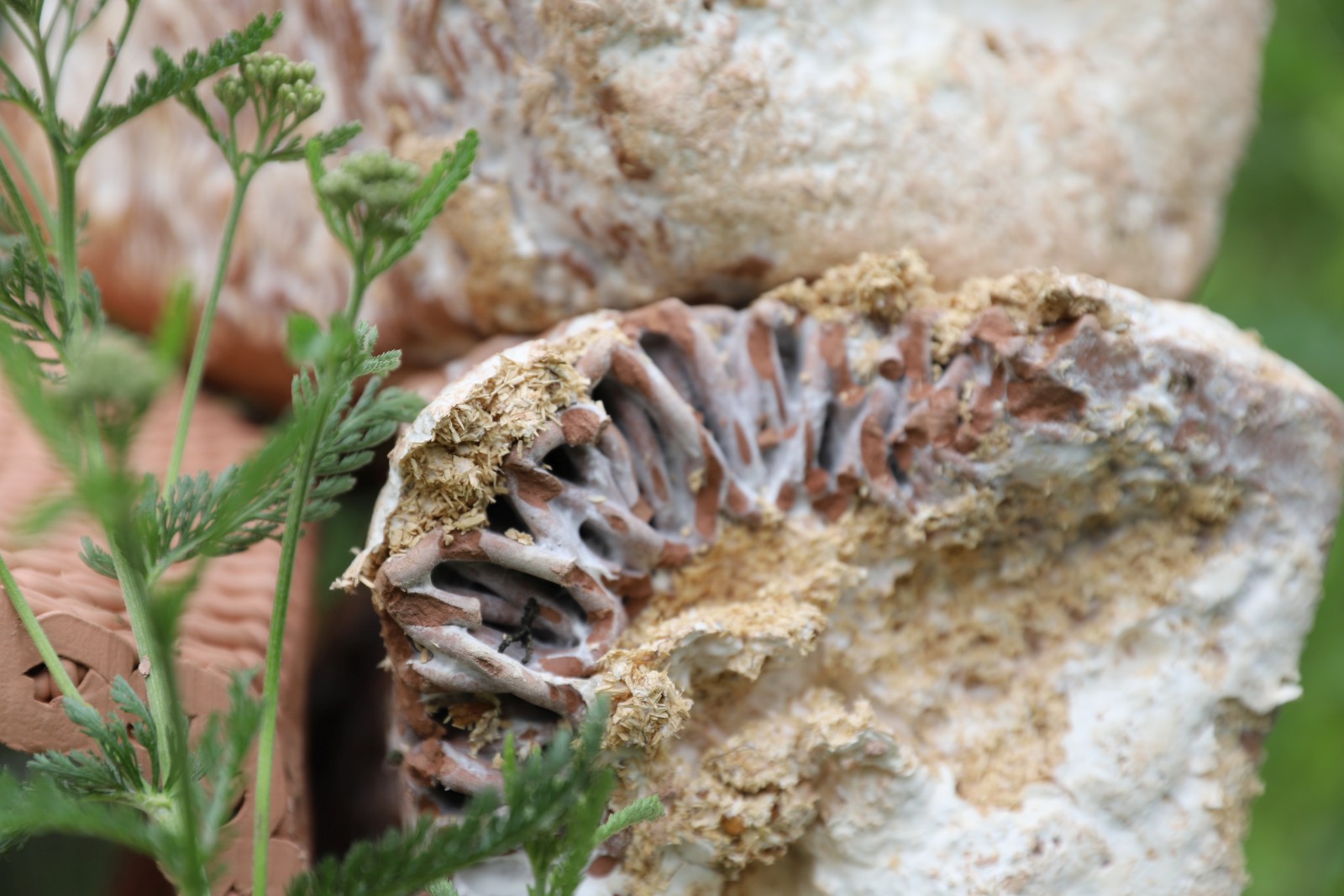FWF-Project: Mycelium-Based Clay Composites in Architecture
Project Leader
Milena Stavric
Project Member
Hana Vasatko
FWF-Link [x]
Project partners
Dorothee Hippler
Anita Klaus
Abstract
The wider research context: The framework for this research proposal lies at the intersection of sustainable construction and experimental architecture. It combines digital fabrication with natural processes and involves close consultation with experts from microbiology and applied geosciences. The subject of the research is the exploration of mycelium-based clay composites (MBCCs) in architecture. While conventional clay elements have been extensively researched, integrating living organisms, such as mycelium, represents a pioneering area in building materials. By exploring the relationship between substrate composition and mycelium strains that influence the porosity distribution in clay, the study aims to advance the understanding of these composite materials and their potential applications in sustainable architecture. This research contributes to the global shift towards sustainable construction practices by exploring the creation of new, versatile construction elements that integrate multiple capabilities within a singular building material.
Research questions centre on exploring the material properties of digitally fabricated MBCCs, which makes controlled material distribution within the composite possible. Clay’s inclusion enhances plasticity and structural integrity of mycelium-based composites, making them suitable for 3D printing. Mycelium, when added to clay-based composites, offers improved material properties and the potential to use natural growth to connect non-fired adjacent elements. Secondly, fired mycelium-based clay composites result in a unique mycelial-induced porosity. The research will examine two materials – unfired MBCCs and fired MBCCs.
Methods: The methods that will fulfil the research objectives include customised tests, mechanical testing, FTIR-ATR, µ-CT, SEM imaging, etc. These methodologies will be complemented by digital fabrication techniques, a new inoculation method, and using customised tools that are needed for developing such composite materials.
Innovation: The project’s originality can be described in six subjects: 1) in-depth research into the fundamental properties of mycelium-based clay composites, 2) investigation into mycelium-induced porosity in clay, 3) examination of how various lignocellulosic substrates influence the material properties of individual elements, based on the mycelium’s digestion preferences, 4) utilisation of customised nozzles and digital tools to enhance the precision and subtleness of gradient properties in building elements, 5) exploration of novel inoculation techniques and 6) adoption of growth as a method for connecting unfired structural elements.
Primary researchers involved: The project involves M. Stavric (the PI), H. Vašatko (PhD student/PostDoc) and two student assistants. Collaborators will be from the fields of microbiology (A. Klaus) and geosciences (D. Hippler).


